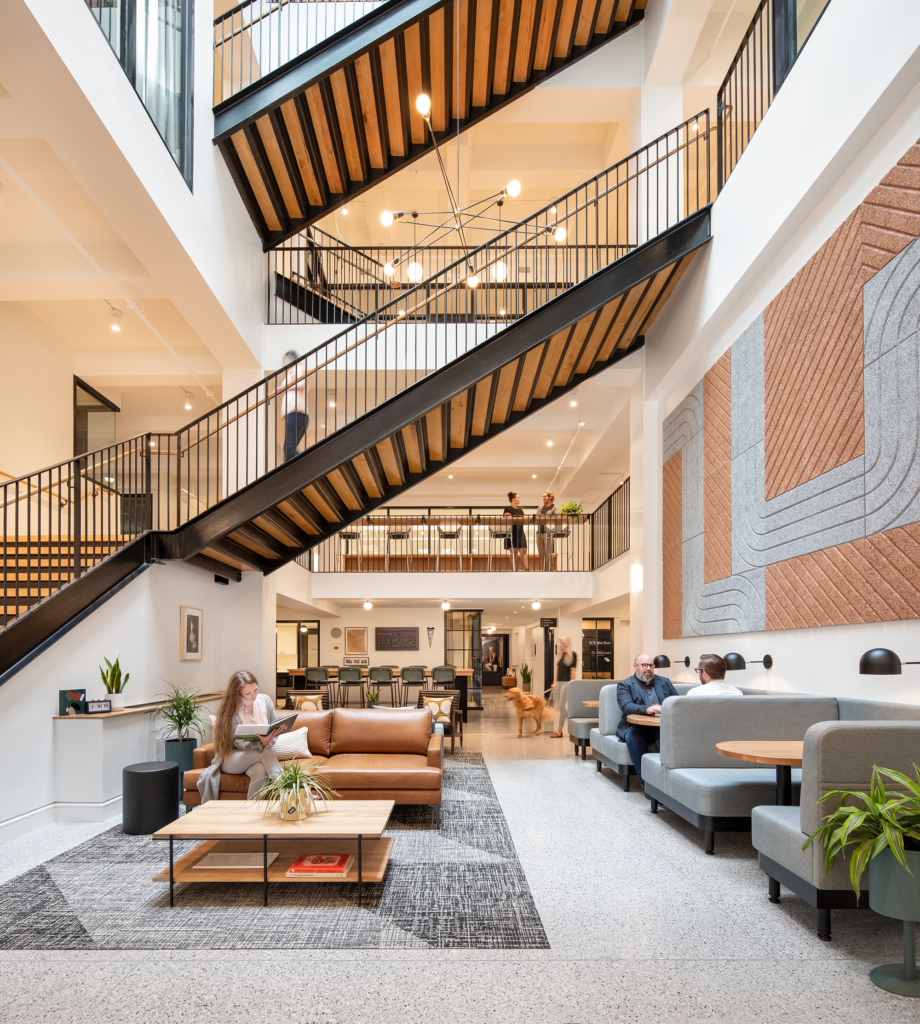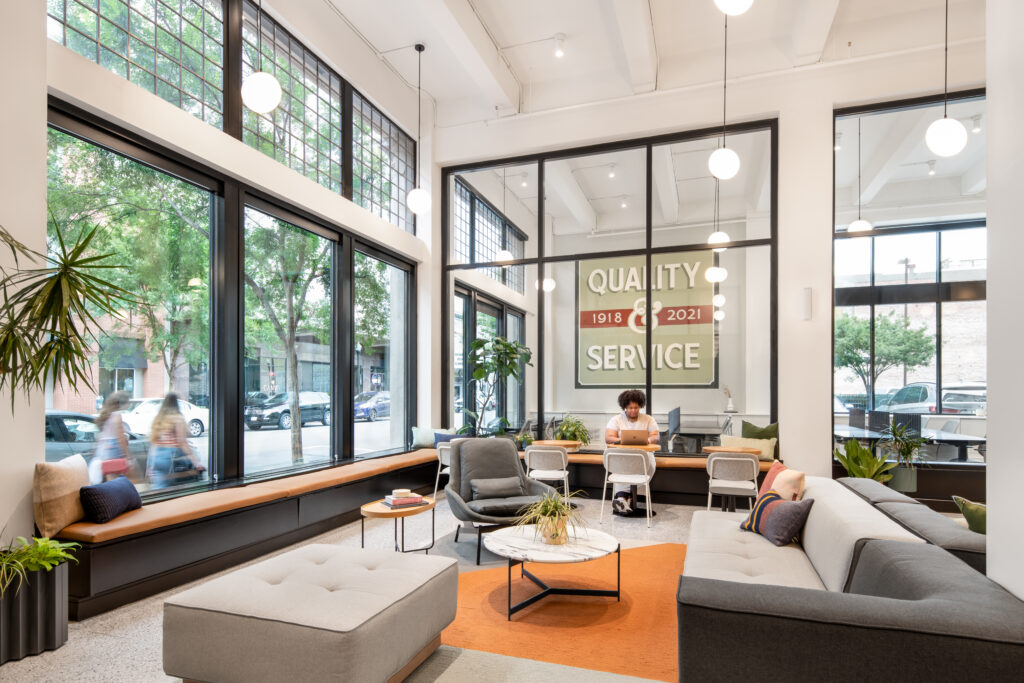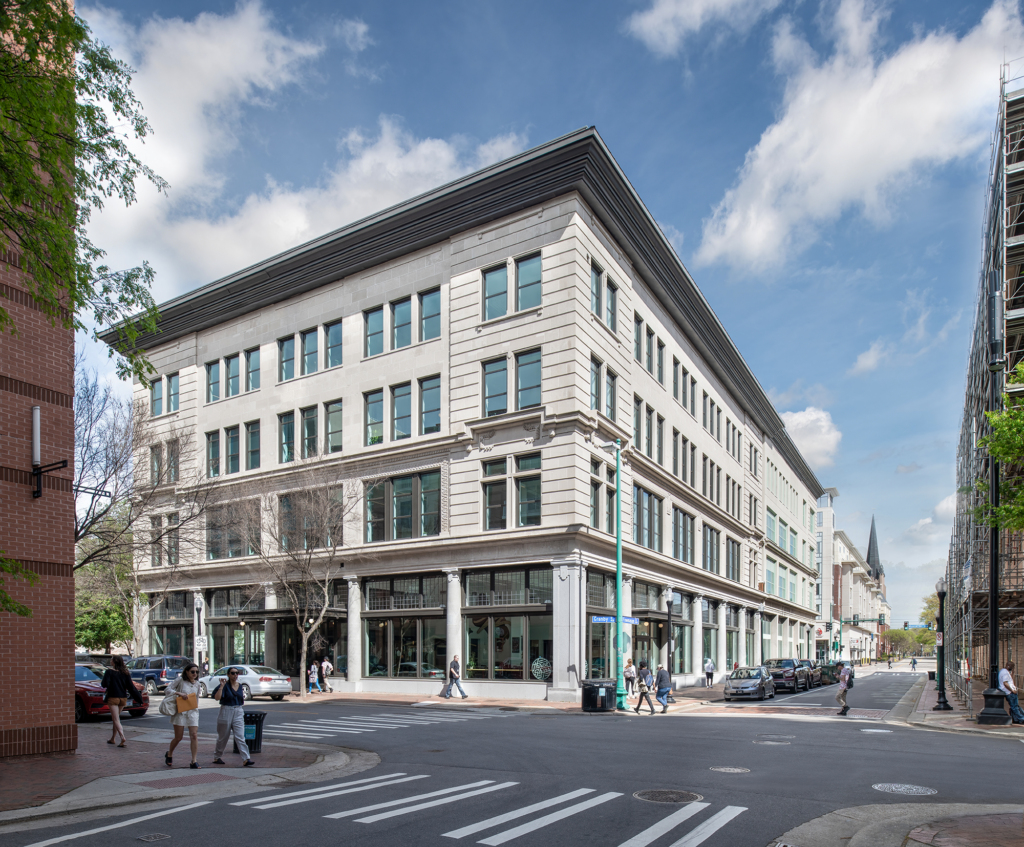Fewer and fewer Norfolkians still remember Rice’s Department Store as a handsome and marble-columned community anchor that occupied the corner of Granby and Freemason Streets for nearly 50 years in downtown Norfolk. Fewer still know the site had two previous lives, starting as an exhibition hall in 1910 known as the Fergus Reid Building, then becoming the Ames and Brownley Department Store in 1918, before beginning its storied run as Rice’s in 1939. The advent of the suburban mall effectively led to its shuttering in 1985, after which the City of Norfolk purchased the property and its neighbors to create a combined 100,000 square-foot redevelopment opportunity, eventually selling to local digital marketing agency Grow in January 2020, mere weeks before COVID lockdowns.

So began the site’s next chapter as Assembly, an incubator space and suite of offices for creative enterprises and nonprofit organizations that run the gamut from digital marketing, to AI algorithms, to coastal resilience. Designed by Work Program Architects (WPA), Assembly’s new skin honors its amalgamated past to create an innovation space for the 21st century. It’s a story about adaptive reuse and architectural rebirth, but it’s also a story about a new sense of purpose for its tenants, which also includes the 17-person WPA, founded in 2010. It’s not a place where you come to buy goods any more, but a place where good things are now created.
“This project allows the creative people behind creative businesses to have a place to hold conversations — to create the circumstances for people to get interested in each other’s work, to participate in activities that inspire them,” says Robert Crawshaw, AIA, owner/architect at WPA. “For that reason, it’s interesting and gratifying to watch how people move around the space depending on the work they have to do—alone or with others.”

Across 50,000 square feet, Assembly’s tenants have access to 15,000 square feet of common-area lounges, meeting rooms, wellness spaces, roof deck amenities, and all of the accoutrements of enlightened office life for eating, gaming, and podcasting. Each of its floors is luminous and airy with generous windows and high ceilings. Each square inch is optimized for the matrix of work modes that our days have come to represent, post-COVID, from total focus to social serendipity, and from solo late-nighters to all-day staff retreats. Richmond design firm Campfire & Co. found richness through texture and color to create interiors that strike the challenging balance between defined zones in plan and unified interiors in section. (WPA is beginning a second design phase for another 50,000 square-feet in what was the adjacent hull of Sears & Roebuck.)
In 2022, AIA Virginia recognized Assembly with an Award of Merit, with jurors citing connectivity as its chief virtue. Connectivity also happens to be its central design gambit—in the form of a grand staircase that opens to seven feet wide at ground level to welcome the intrepid and tapers to five feet at the top. Taking advantage of the space once occupied by the department store escalators and removed in 1990s, WPA convinced the Virginia Department of Historic Resources (DHR) to allow them to replace it with a stairwell that could connect all five levels and punch through the roof, flooding the central core with light.
“It was about getting everyone together, which isn’t the only function of a staircase, but it is the highest purpose of a staircase—to connect us,” says Crawshaw.
It’s a connection that Crawshaw’s own firm enjoys, too, whose firm once occupied an entirely different kind of space around the corner. In moving offices to the multi-level Assembly from what she calls a street level “fishbowl,” WPA principal and co-founder Mel Price, AIA, says she had serious concerns about seeming less accessible to clients and the community.
“Our fear was about being off the street and about being on the third floor, and I wondered if people would feel welcome here,” says Price, “But, the icing on the cake for me—and why we decided to come—is that the owners of the building have made it available to anyone, so anyone at all can have this meeting or that event on the rooftop, or walk through the doors and be here for lots of different purposes.”

Price’s other reason for choosing to move her office to Assembly is its prominence along Freemason Street, an influential east-west artery in Norfolk’s gridded downtown plan.
“Freemason is the east-west connection between an economically and racially divided city,” she says, “and we’ve been working on a plan to remove the barriers so that Freemason Street can connect our neighborhoods to Downtown and stitch the city back together. Assembly’s site is, without exaggeration, an integral part of that work from an urban perspective and a historical perspective.”
William Richards is the Editorial Director of Team Three, an editorial and creative consultancy based in Washington, D.C.
Project Credits:
Architecture Firm: Work Program Architects (WPA)
Owner: Assembly (Drew Ungvarsky)
General Contractor: Clancy & Theys Construction Company
Interior Design: Campfire & Co.
Photographer: Yuzhu Zheng Photography
